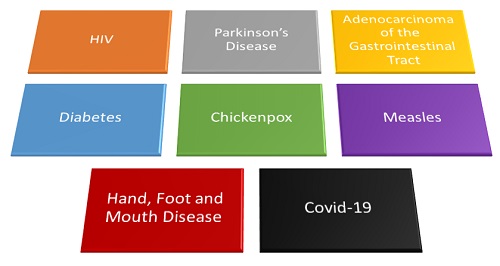Considering a career as a dermatologist? As one of the highest-paying medical specialties, dermatology, the branch of medicine that focuses on the function and disorders of the skin, offers plenty of variety. As a dermatologist, you will perform procedures that range from screening for and removing skin cancer to treating inflammatory skin conditions and testing for the underlying medical conditions that a skin condition may accompany. Surgical procedures are a common and crucial part of dermatology, although they are often minimally invasive. Physical exams, biopsies, nonsurgical skin cancer treatments and laser therapy procedures are other procedures dermatologists might perform.
Diagnosing and Treating Skin Cancers and Tumors
One of the main reasons patients visit a dermatologist’s office is to detect and treat skin cancer. Skin cancer is the single most common cancer that develops among patients in the United States, according to the American Academy of Dermatology Association. Fortunately, common skin cancers like squamous cell carcinoma and basal cell carcinoma are treatable and even curable if detected early, and even for more dangerous melanoma, the five-year patient survival rate is 99 percent, as long as the condition is treated before it spreads.
Regular skin cancer screening consists of a painless physical examination by a dermatologist. During this examination, the doctor may make precise notes of moles and other skin marks, including their size, shape and color. Watching skin abnormalities over time can reveal if they are cause for further intervention, such as removal or a biopsy.
A skin abnormality that appears worrying may prompt a skin biopsy, which is usually an outpatient procedure and can often be performed during the office visit. A dermatologist may remove just a specimen to study or, in the case of a small skin lump or rash, remove the entire area. Some of the procedures a dermatologist may use in a biopsy include excisional removal, incisional removal, fine needle aspiration and shave or punch biopsy, according to the American Osteopathic College of Dermatology.
Skin cancer is often treated by removing the affected area of skin, through a surgical procedure like excisional surgery or Mohs surgery. Other treatments a dermatologist may perform include superficial radiation, topical chemotherapy, scraping away and electrically destroying cancer cells through curettage and electrodesiccation and cryosurgery, or freezing the tissue with liquid nitrogen, the Mayo Clinic reported.
Dermatologists usually treat early-stage skin cancer on their own, but advanced skin cancer may require a more robust team of providers, including surgical oncologists.
Treating Inflammatory Skin Disorders
IMAGE SOURCE: Pixabay, public domain
If you associate a dermatologist with treating acne, you’re on the right track. Inflammatory skin disorders like acne, rosacea, psoriasis and eczema are part of a dermatologist’s specialty. While many inflammatory skin disorders may be managed with medications like steroids and antibiotics, dermatologists also use medical procedures to treat these concerns at times. For example, phymatous rosacea, a condition that includes skin thickening and excess tissue growth, may warrant surgery. Both surgical and nonsurgical laser treatments can also be used in dermatology.
Some procedures a dermatologist performs are strictly cosmetic, like injecting fillers such as Botox to reduce naturally occurring wrinkles. Many medical dermatology procedures for inflammatory skin disorders both improve appearance and minimize symptoms of pain and itchiness.
Diagnoses Beyond Skin Disorders
As a medical specialty, dermatology is more than skin deep. The symptoms that appear in a patient’s skin, nails, hair and other areas of a dermatologist’s focus don’t always begin in these parts of the body. Sometimes, they indicate systemic medical conditions or the presence of an infectious disease.
For example, an inflammatory condition called seborrheic dermatitis may indicate a systemic condition like HIV or Parkinson’s disease, the Cleveland Clinic reported, while a benign skin condition called seborrheic keratoses can, in rare cases, be associated with adenocarcinoma – cancer – of the gastrointestinal tract. Diabetes, in particular, can cause numerous skin systems, including patches of altered skin color and texture, blisters and skin tags, according to the American Academy of Dermatology Association. The rashes that appear with chickenpox, measles and hand, foot and mouth disease are some examples of dermatologic symptoms that indicate infectious diseases. In spring 2020, research emerged suggesting that dermatologic symptoms like rashes, particularly on the toes, could be a symptom of COVID-19, Dermatology Times reported.
Uncovering systemic or infectious diseases that cause skin disorders can require different diagnostic tools. In a dermatologist’s office, diagnosing these conditions begins with a clinical examination of the skin. The dermatologist may order blood work, biopsies and other diagnostic tests, which may be performed in the office or at a separate facility. Some tests use advanced computerized measuring equipment, while others require old-fashioned removal of a skin abnormality for testing.
If a dermatologist diagnoses a systemic or infectious illness as the cause of your skin symptoms, they may refer you back to a primary care doctor or a specialist who focuses on the root cause of your condition as well as helping you manage the skin manifestations of that disorder.
Additional Resources
Do Dermatologists Have a Specialty of Certain Bodies Parts and Areas?


